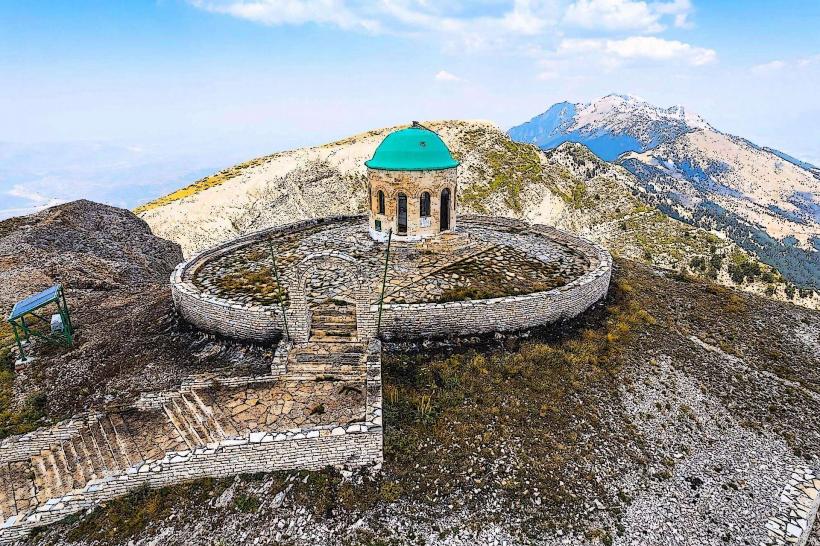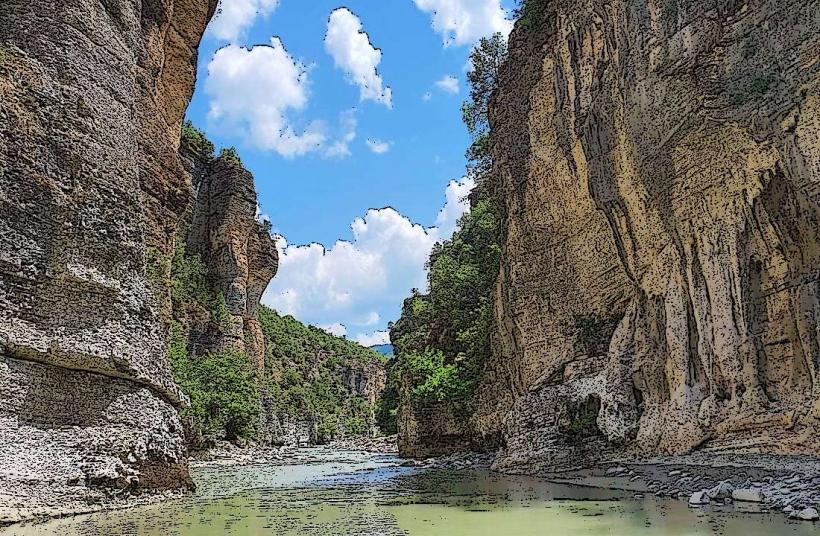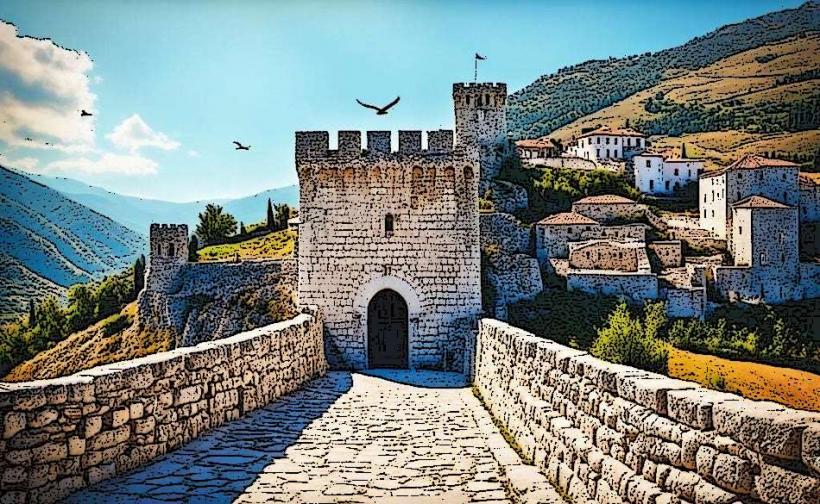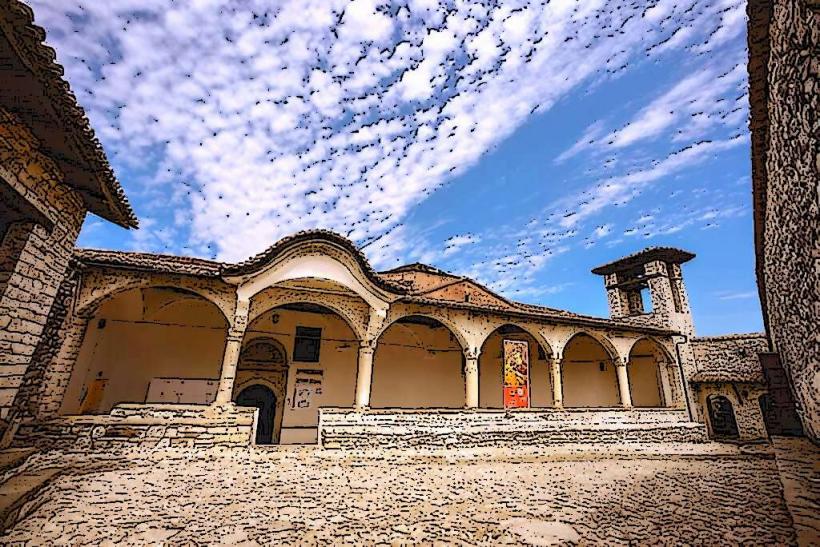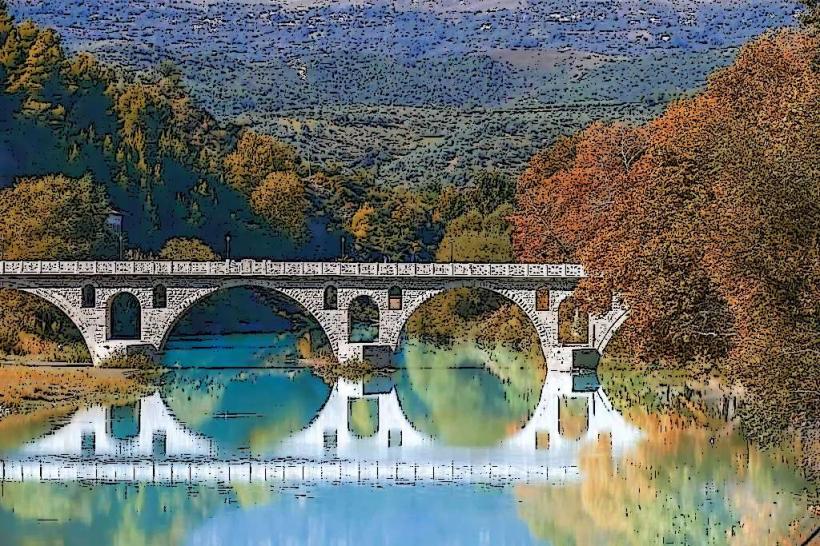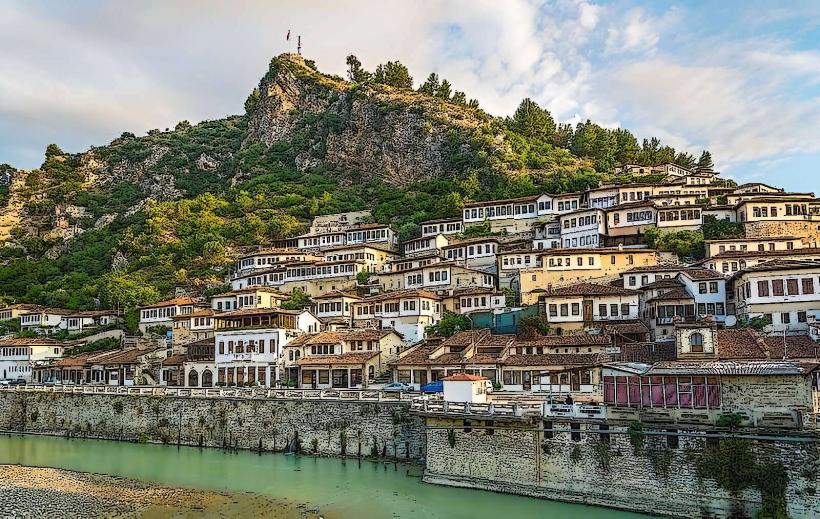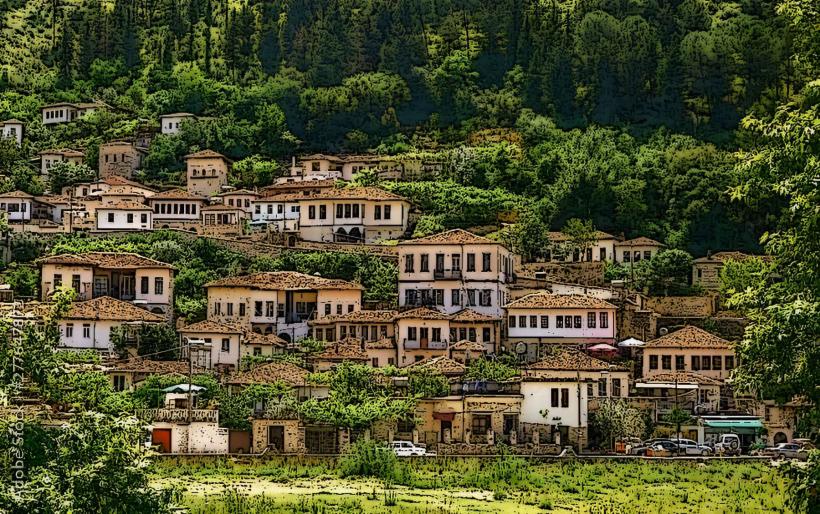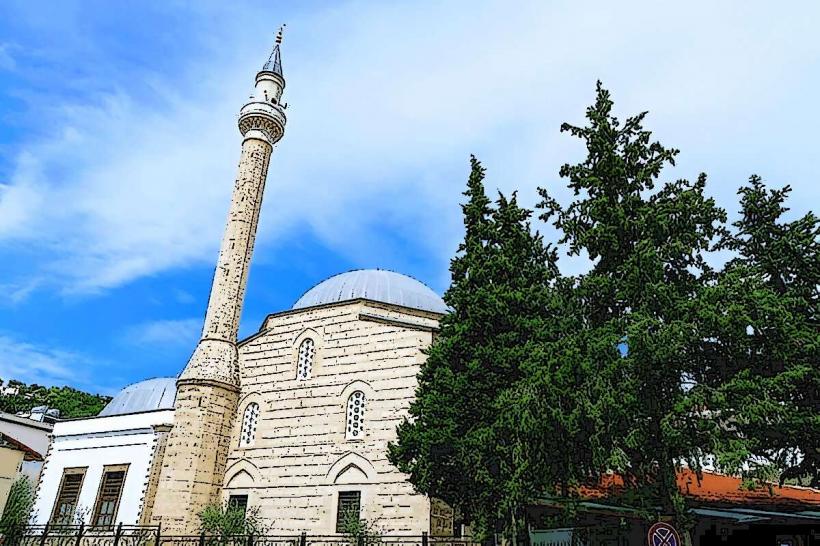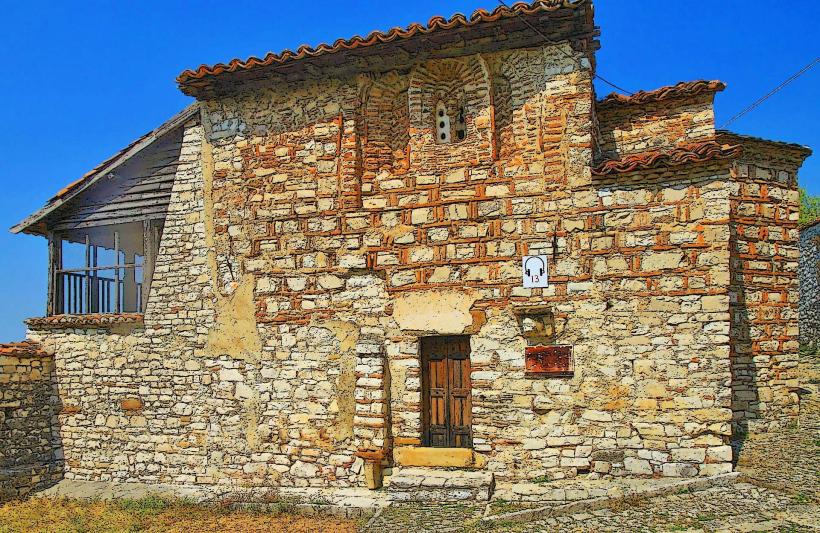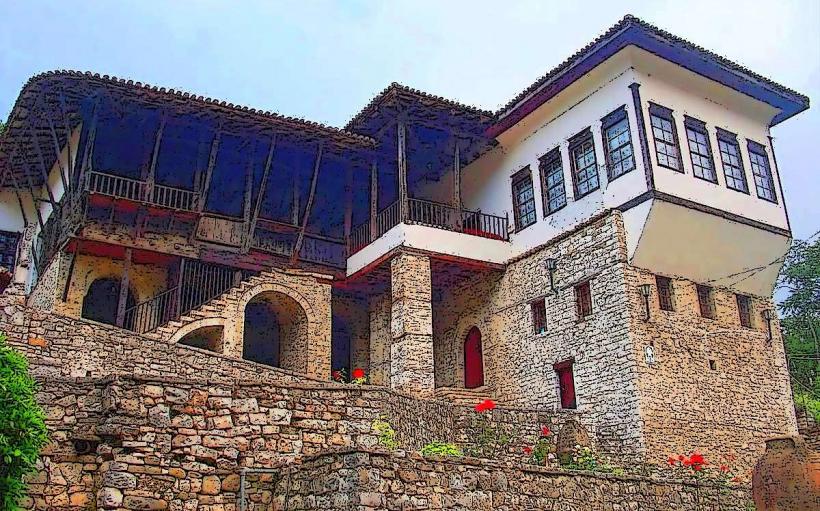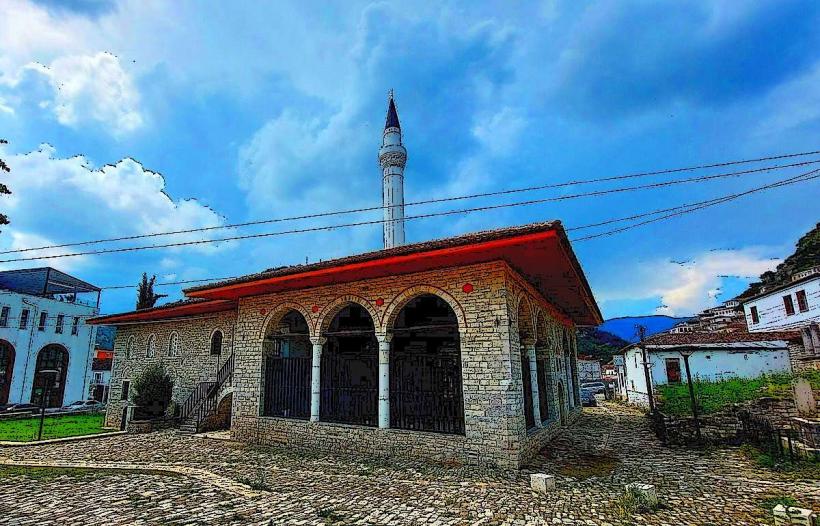Information
Landmark: Holy Trinity ChurchCity: Berat
Country: Albania
Continent: Europe
The Holy Trinity Church (Albanian: Kisha e Shën Triadhës) is an important Orthodox Christian church located in Berat, Albania. It is one of the historical landmarks of the city and stands as a symbol of the rich Christian heritage of the region, which has been influenced by both the Byzantine and Ottoman periods.
Historical Background
Construction and Origins
- The Holy Trinity Church is believed to have been built in the 13th century, during the Byzantine era, although some architectural elements suggest later modifications, particularly from the Ottoman period. The church is dedicated to the Holy Trinity, which is a central doctrine in Christianity that expresses the unity of God in three persons: the Father, the Son, and the Holy Spirit.
- The church's construction during the Byzantine period is reflected in its architectural style, which combines both Byzantine and medieval elements. It has witnessed the religious transitions of Albania, serving both as a Christian church and, during certain periods of Ottoman rule, being subjected to the influence of Islamic practices.
Religious Importance
- Over the centuries, the Holy Trinity Church has been an important place of Orthodox worship for the people of Berat. It has also played a key role in the preservation of Christian traditions in the region, despite the challenges posed by the Ottoman Empire’s dominance, which often saw the Christian population living under Islamic rule.
- The church has been used for regular religious ceremonies, including liturgies, baptisms, weddings, and funerals. It remains an active site for the Orthodox Christian community in Berat.
Architectural Features
Byzantine Design
- The Holy Trinity Church reflects the Byzantine style, which is characterized by domed ceilings, mosaic decorations, and iconography. The church features a central dome over the main sanctuary, which is a typical feature of Byzantine churches, symbolizing the presence of God.
- The building itself is constructed with a combination of stone and brick, giving it a solid, sturdy appearance typical of medieval churches in the region. It has a simple yet elegant structure, with a nave and two aisles that separate the congregation from the sanctuary.
Iconostasis and Interior Decoration
- Inside the church, visitors can find an iconostasis (a wall of icons) that separates the sanctuary from the main body of the church. The iconostasis features a variety of religious icons painted in the traditional Byzantine style, depicting scenes from the life of Christ, the Virgin Mary, and various saints.
- The interior is also adorned with beautiful frescoes and paintings, many of which date back to the church's early history. These religious artworks are important examples of Byzantine iconography and offer a glimpse into the religious and artistic traditions of the period.
Modifications Over Time
- The church has undergone several renovations and restorations over the centuries, especially during the Ottoman era and more recently during Albania's post-communist period. Despite these changes, the Holy Trinity Church has managed to preserve much of its original character and artistic integrity.
- The most recent restoration efforts have aimed to preserve the frescoes, iconostasis, and architectural features while ensuring the church remains functional for modern worship.
Cultural and Religious Significance
Symbol of Orthodox Christianity
- The Holy Trinity Church is one of the key symbols of Orthodox Christianity in Albania, and it represents the enduring presence of Christianity in a region that has been deeply influenced by Islam during the Ottoman period. The church stands as a testament to the strength of the Orthodox faith in Berat and its historical importance to the people of the city.
- The church also reflects the historical coexistence of Orthodox Christians and Muslims in Berat, which was part of the broader multicultural fabric of the city during the Ottoman era.
Cultural Heritage
- The Holy Trinity Church is part of the broader cultural heritage of Berat, a city that is known for its UNESCO World Heritage status, due to its well-preserved Ottoman architecture and religious sites. The church’s preservation adds to the rich historical tapestry of the city, which is a melting pot of different cultures and religions.
- The church, along with other historic buildings in Berat, is an important site for tourists interested in learning about the city's Byzantine and Ottoman history. It also serves as a site of pilgrimage and spiritual reflection for those who follow the Eastern Orthodox Christian faith.
Visiting the Holy Trinity Church
Location
- The Holy Trinity Church is located in the Mangalem Quarter of Berat, which is the historic center of the city. The church is easily accessible for tourists and is a part of the city’s rich cultural itinerary alongside other key landmarks such as the Berat Castle, Onufri Museum, and the Ethnographic Museum.
Visitor Experience
- Visitors to the Holy Trinity Church can expect to experience a peaceful and reverent atmosphere. As an active place of worship, the church maintains a calm and reflective environment, making it an ideal place for quiet contemplation or simply admiring its beautiful architecture and religious artworks.
- The church is open to tourists, and there are often guides available to provide insight into its history, architectural features, and religious significance.
Dress Code and Respect
- As the Holy Trinity Church is an active place of Christian worship, visitors are expected to dress modestly and behave respectfully. Visitors should refrain from disruptive behavior and may be asked to remove shoes before entering the church, as is customary in many Orthodox Christian churches.
Conclusion
The Holy Trinity Church of Berat is a stunning example of Byzantine architecture and Orthodox Christian heritage in Albania. Its historical and religious significance, coupled with its architectural beauty, makes it a key site for both locals and visitors interested in the rich Christian legacy of Berat. As a testament to the city’s religious history and cultural diversity, the Holy Trinity Church remains a symbol of the enduring presence of Christianity in the region, offering a peaceful space for worship and reflection.


